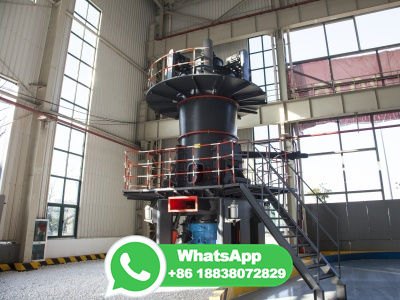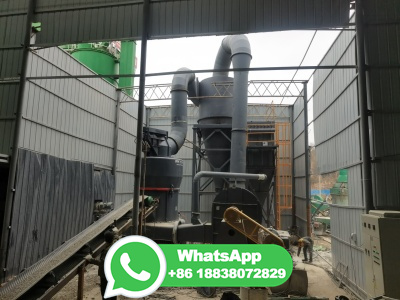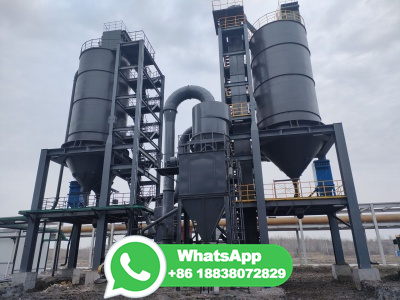What Is The Ion Exchange Capacity Of Guatemala Clay
Simply complete the form below, click submit, you will get the price list and a GBM representative will contact you within one business day. Please also feel free to contact us by Online Service. ( * Denotes a required field).
 Get Price >
Get Price >Cation Exchange Capacity of Soils
Feb 12, 2020 · CEC, an abbreviation for Cation Exchange Capacity, refers to the amount of negative charges available on the surface of soil particles. It gives an indiion of the potential of the soil to hold plant nutrients, by estimating the capacity of the soil to retain ions, which are positivelycharged substances.
 Get Price >
Get Price >Factors affecting the ratio of ion exchange ...
Unusually high ion exchange capacity (CEC) values relative to clay content are frequently reported for lignite overburden and minesoils. The CEC to percent clay ratio is commonly greater than one and would require that the average charge of the clay .
 Get Price >
Get Price >Processes for the extraction and purifiion of shikimic ...
Remaining extract was passed through a Diaion HP20 adsorbent resin column and eluted with DI water. The collected solution was then passed through a column of Amberlite IRA400 ion exchange resin (acetate form), and the column washed with DI water. Shikimic acid was not detected in the collected aqueous elution.
 Get Price >
Get Price >What material in the soil serves a similar role to that of ...
Aug 07, 2021 · What material in the soil serves a similar role to that of clay because of its ion exchange capacity, ability to store water, and ability to bind particles together? 0. Answers (1) Elijah 7 August, 21:42. 0. humus Explanation: Humus Humus is the amorphous organic matter in the soil.
 Get Price >
Get Price >Week 7 Clay And Ion Exchange (1)
Feb 21, 2010 · Week 7 Clay And Ion Exchange (1) no protein enzymes in existence to form the first nucleotides or alyze the first formation of RNA strands because these proteins are only formed by RNA . all that was required was an assemblage of RNAs capable of both alysis and repliion with change.
 Get Price >
Get Price >Cation Exchange
However, climate exerts a natural control or limit as to the amount of soil organic matter that can be achieved and sustained. Cation exchange capacity (CEC) The CEC of a soil depends upon the amount and type of soil colloids present. The clay content, the type of clay minerals present, and the organic matter content determine a soil''s CEC.
 Get Price >
Get Price >Smart Nanocontainers Preparation, Loading/Release ...
The loading capacity of nanocontainers can be enhanced by using both hollow and porous nanostructures. ... pHcontrolled release [1, 34, 70], temperatureresponsive control [22], ionexchange control [74, 75], redoxresponsive control of release [76, 77], lightresponsive controlledrelease [78, 79] and release under mechanical rapture [80, 81 ...
 Get Price >
Get Price >Effect of clay with different ion exchange capacity on ...
Sep 23, 2008 · Two clays with different ion exchange capacity have been used to prepare and compare the several properties. The clays have been modified using Amphoterge K2 by ion exchange reaction to increase the compatibility between the clay and polymer matrices.
 Get Price >
Get Price >Ultrafiltration by a compacted clay membrane. I
It is shown how it is possible to proceed from the ion exchange capacity of clay minerals and, by means of the Donnan membrane equilibrium concept and the TeorellMeyerSiever theory, develop a theory to explain why and to what extent ultrafiltration occurs when solutions of known concentration are forced to flow through a clay membrane.
 Get Price >
Get Price >What Is Ion Exchange Resin and How Does It Work?
Nov 28, 2017 · Ion exchange is a reversible chemical reaction where dissolved ions are removed from solution and replaced with other ions of the same or similar electrical charge. Not a chemical reactant in and of itself, IX resin is instead a physical medium that facilitates ion exchange reactions. The resin itself is composed of organic polymers that form a ...
 Get Price >
Get Price >Bentonite
Calcium bentonite may be converted to sodium bentonite (termed sodium beneficiation or sodium activation) to exhibit many of sodium bentonite''s properties by a process known as "ion exchange. In common usage, this means adding 5–10% of a soluble sodium salt such as sodium carbonate to wet bentonite, mixing well, and allowing time for the ion ...
 Get Price >
Get Price >Clay minerals: Ion exchange | SpringerLink
Ion exchange is the substitution of one ion for another on the surface or in the interstices of a crystal. It does not affect crystal structure. Ion exchange in clay minerals occurs because clay minerals can sorb ions and, to a lesser extent, anions from solution. However, when exposed to a different solution, some of these sorbed ions are ...
 Get Price >
Get Price >IonExchange Phenomena of Soil
Clay minerals having 2: 1 expanding lattice type generally have high ionexchange especially ion exchange than that of 1: 1 type of clay minerals (low surface charge density). The appliion of material in the acid soil decreases the rate of ion exchange reactions because of varying degree of ionization.
 Get Price >
Get Price >Roles of Clay and Oxide Minerals in Soils
Golden DC, Chen CC, Dixon JB (1986) Ion exchange, thermal transformations, and oxidizing properties of birnessite. Clays Clay Miner 34: 511–520 CrossRef Google Scholar Golden DC, Dixon JB, Kanehiro Y (1987) Properties of lithiophorite in an Oxisol from Hawaii.
 Get Price >
Get Price >What is Cation Exchange Capacity (CEC)?
Jan 26, 2019 · Cation exchange capacity, or CEC, is a rating of how well soil or other types of grow media can hold plant nutrients. The plant nutrients are measured as ions, and examples of ions include potassium, calcium, and other positively charged ions. Knowing the CEC of your soil or grow medium is important for several reasons, but the primary ...
 Get Price >
Get Price >USA1
USA1 US13/653,485 USA USA1 US A1 US A1 US A1 US A US A US A US A1 US A1 US A1 Authority US United States Prior art keywords clay heavy metals water siwak stick powder Prior art date 201007 .
 Get Price >
Get Price >Fundamentals of Soil Cation Exchange Capacity (CEC)
Measuring Cation Exchange Capacity Since a soil''s CEC comes from the clay and organic matter present, it can be estimated from soil texture and color. Table 1 lists some soil groups based on color and texture, representative soil series in each group, and common CEC value measures on these soils. Table 1.
 Get Price >
Get Price >ionexchange reaction | chemical reaction | Britannica
ionexchange reaction, any of a class of chemical reactions between two substances (each consisting of positively and negatively charged species called ions) that involves an exchange of one or more ionic components.. Ions are atoms, or groups of atoms, that bear a positive or negative electric pairs or other multiples they make up the substance of many .
 Get Price >
Get Price >Soil and RoadBase Testing Equipment
A complete range of robust, easytouse, reliable and affordable testing equipment to perform analysis of soil samples (including sampling, classifiion, preparation, chemical testing) and to assess compaction, density, bearing capacity and permeability of road base and subbase soils.
 Get Price >
Get Price >The growing medium : chemical properties
The medium itself has a better buffering potential, thanks to its ion exchange capacity. This potential is connected with the presence in it of colloidal substances. Mediums based on peat and clay are characterised by good ion absorption properties of the clayhumus complex, and a good buffering potential.
 Get Price >
Get Price >Background
Mar 12, 2021 · Cation Exchange Capacity. Soil particles consisting of sand, silt, clay, and organic matter have charged surfaces that attract ions (positivelycharged ions) and anions (negativelycharged ions). The ions adsorbed on these charged sites can be exchanged by other ions through a process called ion exchange. Cation exchange capacity is much ...
 Get Price >
Get Price >What is your soil ion exchange capacity ...
Nov 07, 2011 · Clay soils contain more unavailable water than what sand can have at field capacity (Figure 1). This is due to the high reactivity of clay particles hanging onto water molecules and plant roots being unable to take it away. Figure 1. Available water capacity for 10 soil textures in inches of water/foot of soil.
 Get Price >
Get Price >Ion exchange properties of oceanic ...
Results of the experimental study of ion exchange properties of deepsea pelagic sediments and related ferromanganese nodules (FMN) are considered. The exchange complex of sediments and nodules includes Na+, K+, Ca2+, and Mg2+ ions. The FMNs also include Mn2+ ions. Series of reactivity of metal ions during exchange reactions in different types of pelagic .
 Get Price >
Get Price >CiteSeerX — THE CHEMICAL MODELL ING OF CLAY/ELECTROLYTE ...
CiteSeerX Document Details (Isaac Councill, Lee Giles, Pradeep Teregowda): A B S T R A C T: A study of the ionexchange properties of montmorillonite has been performed in order to facilitate computer predictions of the chemical properties of natural fluids and mineral assemblies. Clay/electrolyte interactions can be described using a technique based on the concept of .
 Get Price >
Get Price >What Is Ion Exchange? | Fluence
Feb 16, 2021 · Ion exchange is a water treatment process commonly used for water softening or demineralization, but it also is used to remove other substances from the water in processes such as dealkalization, deionization, denitrifiion, and disinfection. With many other overlapping technologies available, it is important to determine whether ion exchange ...
 Get Price >
Get Price >Calculating Cation Exchange Capacity, Base Saturation, and ...
The purpose of this fact sheet is to define soil ion exchange capacity, base saturation and calcium saturation, and demonstrate how these values are calculated in soil test reports. Cation Exchange Capacity (CEC) Cation exchange capacity (CEC) is a fundamental soil property used to predict plant nutrient availability and retention in the soil. It is the potential of available nutrient ...
 Get Price >
Get Price >clay chemical particles 2
clay chemical particles 2 Elements in the Earths Crust What is the most common element in the earths crust Weight Percent O2 Radius(A
 Get Price >
Get Price >Semiautomated Method for CationExchangeCapacity ...
The highly reactive surfaces of clay, which act as ion exchangers. have a large effect on the physical and chemical behavior of reservoir rocks. The measure of the amount of exchangeable ions on the clay .













